Master Pool Filter Cleaning: Keep Your Water Crystal Clear
June 07th, 2024
June 07th, 2024
Maintaining a swimming pool often feels like a balancing act between chemistry and mechanics, but among the most crucial tasks is keeping your pool filter clean. Whether you’re dealing with a sand, cartridge, or diatomaceous earth (D.E.) filter, understanding how to properly clean it can transform your pool from murky to magnificent. Imagine it as the lungs of your pool — just as humans need to breathe fresh air, your pool needs a clean filter to stay healthy and inviting.
The importance of a clean pool filter cannot be overstated. A few summers ago, I neglected mine for a bit too long, and the resulting green tint was less than appealing. Friends who came over for a swim were more fascinated by the ecosystem forming in the pool than the idea of actually diving in. This experience taught me a thing or two about the necessity of regular maintenance.
Each type of filter has its quirks and advantages. Sand filters are the workhorses, enduring but needing occasional backwashing. Cartridge filters offer superior filtration but require more frequent cleaning. Meanwhile, D.E. filters capture the smallest particles, delivering extraordinary clarity but demanding meticulous attention. No matter the type you own, understanding its needs ensures you’ll extend the life of your filter and enjoy a crystal-clear pool all season long. Embracing the art of pool filter cleaning not only safeguards your pool but enhances every splash and swim.
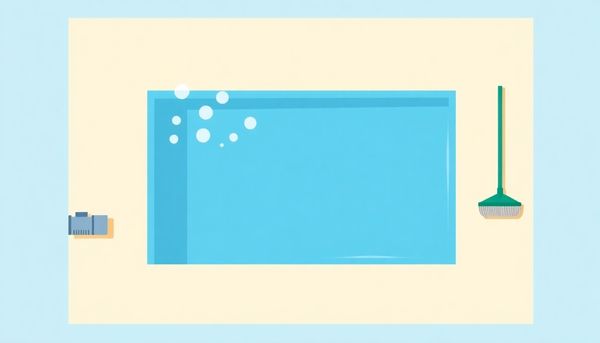
Mastering the art of pool-filter cleaning transforms the mundane into an act of pool-care prowess. Each type of filter—whether sand, cartridge, or diatomaceous earth (D.E.)—requires a tailored approach. Remember, your pool filter is the unsung hero of crystal-clear water, silently capturing debris and impurities. Keeping it clean not only extends its life but also enhances your swimming experience.
When tackling a cartridge filter, efficiency is key. Detach the filter and inspect for wear; a garden hose nozzle works wonders for a thorough rinse. For stubborn grime, a specialized filter cleaner or a soak in a diluted muriatic acid solution can rejuvenate even the most neglected filters. Sand filters, on the other hand, thrive on regular backwashing. This flushes out trapped contaminants, keeping your system at peak performance. A once-a-year chemical cleaning can tackle the more stubborn residues that backwashing leaves behind.
D.E. filters demand a bit more finesse. Thoroughly spraying the grids or fingers after backwashing helps remove the caked-on D.E. powder. Occasionally, an overnight acid soak may be necessary for deep cleaning. Always handle acids with care, donning protective gear to prevent mishaps.
In my own pool adventures, I’ve found that establishing a routine not only simplifies the process but also reduces the likelihood of surprises. A clean filter ensures not just clear water but a clear mind, knowing that your pool is in optimal condition. So, next time you roll up your sleeves for filter duty, remember—mastery is just a few steps away.
Selecting the right cleaning method for your pool filter might seem like a maze of choices, but it's simpler than it appears. Each type of filter—cartridge, sand, or diatomaceous earth (D.E.)—has its own cleaning nuances. When I first tackled cleaning my cartridge filter, I mistakenly thought a quick rinse would suffice. It wasn't until I noticed cloudy water that I realized a more thorough approach was necessary. This experience taught me that understanding your specific filter's needs can save a lot of hassle.
Cartridge filters, for instance, require gentle handling and regular cleaning to remove debris lodged between pleats. A simple garden hose with a spray nozzle works wonders, but for stubborn grime, a specialized cartridge cleaner might be necessary. Sand filters rely on backwashing to remove accumulated dirt. This process involves reversing the water flow through the filter, literally washing away dirt and grime. Meanwhile, D.E. filters typically need a combination of backwashing and periodic manual cleaning, often involving a careful handling of the powdery D.E. material.
Choosing the right method not only extends the life of your filter but also ensures your pool remains a sparkling oasis. It's a bit like matching a key to a lock—each filter type has its own way of being kept pristine, and the reward for choosing correctly is a crystal-clear pool that beckons for a refreshing swim.
Stepping into the realm of pool filter maintenance begins with a crucial first step: gathering the right cleaning supplies. Skipping this preparation could transform a simple task into a frustrating ordeal. Whether your filter is sand, cartridge, or D.E., specific tools and materials will streamline the process and enhance your results.
For a cartridge filter, assemble a garden hose with a high-pressure nozzle, a bucket large enough to submerge the filter, and a specialized filter cleaning solution. The solution will break down stubborn debris and oils, ensuring your filter can function at peak efficiency. Don’t forget a soft-bristle brush for gently scrubbing away surface grime—think of it as a gentle exfoliation for your pool filter.
Sand filters demand a slightly different arsenal. You'll need a backwash hose, a multiport valve, and sand filter cleaner. A reliable shop vacuum can also be a handy tool if you need to remove any old sand. Remember, sand filters typically require a full deep clean yearly, so keeping these supplies on hand will save you time and hassle.
For D.E. filters, safety is paramount. Equip yourself with acid-resistant gloves and safety goggles if you're using muriatic acid for a deep clean. You'll also need your trusty garden hose, a D.E. filter cleaner, and a large container for soaking the grids or fingers. Always handle chemicals with care and follow instructions meticulously.
Gathering these supplies not only makes the task manageable but also elevates it to a routine slice of pool care—one that ensures crystal-clear water and a swim-ready pool at all times.
When it comes to maintaining a pristine pool, routine filter maintenance is as necessary as sunscreen on a sunny day. Your pool filter, whether it's a sand, cartridge, or D.E. system, is essentially the heart of your pool's circulatory system, catching debris and ensuring clean, safe water for you to enjoy. Ignoring this vital component is like leaving your lawn unmowed—over time, the neglect becomes apparent, and not in a good way.
Start by monitoring the pressure gauge regularly. When it hits 10 psi above normal, it’s time to roll up your sleeves. For cartridge filters, this means removing the cartridge to hose it down, checking for any wear or damage while you’re at it. A good soak in a cleaning solution can revive even the grimiest of filters. Sand and D.E. filters require a different approach, often involving backwashing to clear out built-up gunk.
Remember, deep cleaning these systems isn’t just a once-in-a-blue-moon task. An annual deep clean can extend the life of your filter and keep your pool water sparkling. For instance, letting a D.E. filter soak overnight in a diluted muriatic acid solution can work wonders.
Maintenance can sound daunting, but it’s a small price to pay for a summer of clear, inviting pool waters. And when the sun’s high and your friends come over for a swim, the last thing you want is a murky pool. Keep those filters happy, and they’ll reward you with a summer of worry-free splashes.
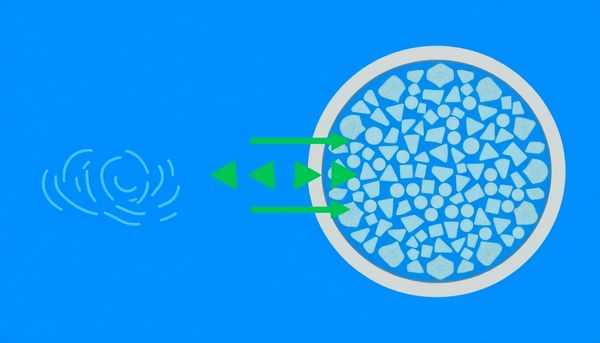
When it comes to maintaining your pool’s sparkle, sand filters are the unsung heroes, quietly capturing debris while you enjoy a refreshing swim. Yet, like all heroes, they require some attention to perform their best. Start by switching off the pool pump and setting the multiport valve to "Backwash." This step alone can breathe new life into your filter, flushing out grime and restoring flow. A telltale sign of needing this is when your pressure gauge reads 10 psi above the norm; think of it as your filter's way of saying, "I need a spa day!"
Once backwashing is complete, it’s time to up the ante with a chemical cleaning—an annual ritual for deeply embedded dirt. Pour a specialized sand filter cleaner into the pump’s strainer basket, then run the pump briefly to circulate the cleaner through the system. Let it sit for eight hours, allowing the solution to work its magic.
After the waiting period, backwash again to expel any remaining contaminants. This process not only extends the life of the filter sand, typically lasting 3-5 years but also keeps your pool in tip-top condition. Investing this bit of time ensures clear, inviting water, transforming maintenance from a chore into a gateway for more poolside relaxation. Remember, a clean filter is the first step toward a clearer pool and a more enjoyable swim.
Peering into the clear waters of your pool, one might not immediately think about the hidden hero working tirelessly to maintain such pristine conditions: the filter. Routine filter inspections aren’t just a task on your maintenance checklist; they’re a crucial ritual that prevents future complications. Have you ever noticed how just a small oversight can lead to major headaches? That’s exactly what happens when filter inspections are neglected.
Start by making it a habit to glance at your pressure gauge weekly. A rise of 10 psi above normal indicates it’s time for a filter check-up. This simple step can alert you to potential issues before they escalate. Next, as you open the filter housing, take a moment to inspect for any visible damage or wear—cracks, tears, or unusual grime are telltale signs.
For cartridge filters, ensure the pleats are free from debris; a quick rinse might be all it needs or a deeper soak if it's been a while. Sand filters might require backwashing, while D.E. filters benefit from a good powder recharge.
Emphasizing regular inspections not only prolongs the life of your filter but also enhances its efficiency. Think of it as a small investment of time that pays off in clarity and quality. You’ll find that a little diligence today keeps your pool inviting and hassle-free tomorrow.
Amidst the joyful splashes and serene laps you enjoy in your pool, there's a hidden hero working tirelessly behind the scenes—your pool filter. To keep this unsung hero performing at its peak, executing a thorough backwash is an essential task. Imagine it as your filter's way of stretching after a long workout, shaking off the grime that builds up over time.
Begin by switching off the pool pump; safety first, always. Next, adjust the multiport valve to the ‘Backwash’ setting. This valve is akin to a pivotal character in a drama, ensuring everything flows smoothly in the right direction. If you're dealing with a sand or D.E. filter, attach a backwash hose to the waste port. Once these connections are secure, restart the pump. As water courses through, watch the sight glass or the end of the hose. The murky water will gradually turn clear, signaling a successful backwash—typically, this takes just a couple of minutes.
Having finished the initial cycle, it's wise to rinse for a short period. Switch the valve to ‘Rinse’, and let the pump run briefly. This step ensures any remaining debris is flushed out, preventing it from sneaking back into the clean filter media. Afterward, return the valve to ‘Filter’, and restart the pump to resume normal operation.
Remember this process each month or whenever that pressure gauge hints at increased resistance. Regular backwashing not only extends the life of your filter but also promises sparkling pool days ahead.
When it comes to keeping your pool sparkling and inviting, sometimes a simple rinse just won't cut it—especially if your filter is loaded with stubborn contaminants. Whether you’re dealing with a cartridge, sand, or D.E. filter, incorporating chemical cleaning solutions into your maintenance routine can make a world of difference. A few summers ago, I faced a similar challenge. My pool water was looking more like a murky lagoon than a backyard oasis. Chemical cleaning came to my rescue.
For a cartridge filter, a specialized cartridge cleaner is your best friend. After removing the cartridge, a thorough soak in this solution will break down oils and minerals that stick stubbornly between the pleats. Imagine all the sunscreen and body oils that accumulate over weeks of pool fun; these need more than just a hose-off. Letting the cartridge sit overnight in the cleaner ensures all residues are dissolved, leaving the filter ready to tackle another season of swimming.
Sand and D.E. filters also benefit from chemical intervention. Sand filters can be rejuvenated using a sand filter cleaner, poured into the pump basket and circulated briefly before leaving it to work its magic overnight. The chemical loosens debris and oils that backwashing alone can't remove. Similarly, for D.E. filters, a mild acid wash—like muriatic acid—can tackle the toughest stains and buildup. Remember, safety first! Always handle chemicals with care, using protective gear to keep yourself safe.
These methods not only extend the life of your filter but also enhance the efficiency of your pool’s overall filtration system. By dedicating a little extra effort, you can enjoy crystal-clear water all season long.
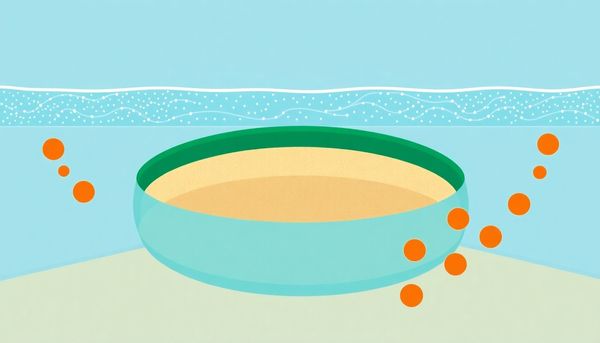
Cartridge filters are often favored for their simplicity and ease of maintenance. Their design allows for straightforward handling, making them an ideal choice for pool owners who prefer a hassle-free approach. The first step is ensuring safety; always turn off the pool pump to prevent accidents. This precaution is not just about keeping water from splashing; it’s essential for protecting the filtration system from damage.
Once the pump is off, remove the filter's top, gently pulling out the cartridge. A quick inspection for wear and tear can save future headaches. Tiny cracks or tears may seem insignificant, but they can drastically reduce efficiency, so replacing a damaged cartridge sooner rather than later is wise.
For cleaning, a garden hose with a spray nozzle is often your best friend. Direct the spray between the pleats of the filter to dislodge dirt and debris. When grime is stubborn, a dedicated filter cleaner might be necessary. These cleaners are designed to break down oils and minerals that accumulate over time.
Should the cartridge appear particularly grimy, consider a soak. An overnight bath in a bucket with a filter cleaning solution can rejuvenate even the most tired-looking cartridge. Once clean, rinse thoroughly, ensuring no cleaning solution remains. Before reassembly, check the O-ring for dryness or wear, applying a suitable lubricant if needed. Finally, secure everything back in place, turn the system on, and breathe easy knowing your pool filter is once again up to the task.
The heart of any swimming pool’s cleanliness lies in its filter, and identifying the type of filter you have is the first step in maintaining your aquatic retreat. There are three main types of pool filters: cartridge, sand, and diatomaceous earth (D.E.). Each comes with its own unique characteristics and cleaning requirements, making it essential to know which one you're dealing with.
Start by examining your filter system. A cartridge filter features a cylindrical element made of pleated polyester or paper, visible when you remove the filter’s top. If your filter relies on a large tank filled with sand, you're looking at a sand filter. These giant tubs typically have a multiport valve on top or on the side. In contrast, D.E. filters are filled with a white powdery substance made from fossilized aquatic organisms. They often use grids or fingers inside the tank to hold the D.E. powder in place.
Not sure which brand or model you have? Look for any serial numbers or brand names stamped on the filter housing and refer to the manufacturer's manual or their website for details. For instance, Hayward D.E. filters often use filter fingers, whereas Pentair might use grids. Understanding your filter type not only helps you clean it properly but also ensures you have the right supplies on hand, making the task more efficient and your pool water ever inviting.
Cleaning a pool filter might seem like a straightforward task, but without the right tools, it can quickly turn into a frustrating afternoon. Gathering the necessary cleaning tools before you begin is crucial to ensure the process is smooth and effective. This preparation not only saves time but also helps avoid any last-minute trips to the store or the garage.
For those dealing with a cartridge filter, a garden hose equipped with a spray nozzle is indispensable. If you’re looking for precision, a nozzle specifically designed for pool cartridges can help flush out debris nestled between the pleats. A filter cartridge cleaner is another must-have, especially for stubborn grime. It’s a lifesaver for breaking down oils and residues that a simple water spray might miss.
On the other hand, sand filters require a backwash hose and a quality sand filter cleaner. The hose helps clear out accumulated dirt, while the cleaner restores the filter’s efficiency. For those rare deep cleans, a multiport valve will allow you to switch between filter and backwash modes seamlessly.
For D.E. filter owners, the list extends slightly. Aside from a garden hose and a backwash hose, safety gear such as gloves and goggles are essential when working with potentially harsh cleaning solutions like muriatic acid. A large plastic container for soaking filter grids can also be invaluable when undertaking a thorough clean.
Having these tools at the ready transforms pool filter maintenance from a chore into a manageable task, leaving you more time to enjoy the crystal-clear waters of your pool.
In the world of pool maintenance, a filter's role is as crucial as a knight defending a castle's walls. Regular cleaning keeps your filter performing at its best, but occasionally, a thorough deep-cleaning is necessary to restore its full potential. Consider this akin to a rejuvenating spa day for your pool filter.
Proactively scheduling a deep-cleaning session at least once a year can make a world of difference. During these sessions, the goal is to eliminate stubborn contaminants that regular cleanings might miss, such as oils, minerals, and microscopic debris. For cartridge filters, a deep-clean involves soaking the cartridges overnight in a specialized filter cleaner or a diluted muriatic acid solution. This process dissolves embedded particles and clears pathways between the pleats, ensuring unimpeded water flow.
Sand filters benefit from a chemical cleaning to clear out gunk that backwashing might not remove. Here, a sand filter cleaner is introduced into the system, broken down over several hours. This method ensures that the sand grains are free from grease and scale, maintaining their rough texture for optimal filtration.
D.E. filters demand a slightly different approach. A thorough rinse and occasional acid wash for the grid or fingers can help remove the build-up of mineral deposits and oils. This keeps that delicate balance of efficiency and longevity intact.
Ultimately, investing time in a deep-clean ensures that your pool filter, regardless of type, functions efficiently, extending its lifespan while keeping your water crystal clear. It's the unsung hero that makes those sunny afternoons by the pool all the more enjoyable.
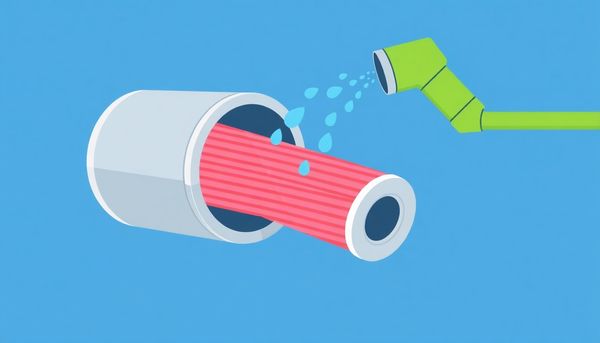
Cleaning a D.E. filter doesn't have to feel like a daunting task. With a bit of know-how, it becomes more routine than rigorous. Begin by shutting off the pool pump and adjusting the multiport valve to the "Backwash" position. For those with a push/pull valve, ensure it's correctly set in backwash mode. This step is crucial to reverse the flow of water and effectively expel debris and old D.E. powder from the filter.
Once you've attached the backwash hose to the waste port, reignite the pump. Watch for clear water to run through the hose, which usually takes a couple of minutes. It’s a satisfying sight, indicating your initial cleaning phase is on track. Afterward, turn off the pump and open the air relief valve to release built-up pressure. Dealing with the drain plug next, allow the water to exit the filter tank completely. This step prevents any mess when you later open the tank.
Removing the filter clamps can feel like unfastening a stubborn jar lid, but it’s straightforward with the right tools. Inside, you’ll find the manifold setup—grids or fingers, depending on your filter model. A garden hose with a spray nozzle works wonders here; aim to thoroughly remove D.E. residue and other debris. If the accumulated dirt proves particularly stubborn, a specialized D.E. filter cleaner will be your ally.
After cleaning, reinstall everything securely. Mix the right amount of D.E. powder with water to create a slurry, then pour it into the skimmer while the pump runs. This recharges your filter, setting it up for optimal performance. Remember, a clean filter not only keeps your pool sparkling but also extends the filter's lifespan. Enjoy the peace of mind and the crystal-clear water that comes with a well-maintained system.
Before embarking on your pool filter cleaning journey, assembling the right tools is as crucial as the task itself. Think of this as prepping for a camping trip; you wouldn’t head out without a tent and sleeping bag. Start by gathering your essential cleaning supplies: a garden hose with a spray nozzle, a sturdy bucket, and specialized pool filter cleaner. You’ll also need a wrench or screwdriver, depending on your filter's fastening mechanisms, along with safety gear like gloves and goggles if you're working with chemical cleaners.
For those dealing with cartridge filters, having a dedicated filter cleaning brush is handy to scrub between the pleats. If you’re tackling a sand filter, prepare a backwash hose to efficiently remove debris. Those with diatomaceous earth (D.E.) filters will want to have fresh D.E. powder on hand for recharging after the clean.
While it may seem like a lot, having these items ready can save you from mid-cleaning trips to the hardware store. It’s akin to baking a cake; you wouldn’t begin mixing without ensuring you have all the ingredients. A friend once shared how they had to pause halfway through cleaning their pool filter because they lacked a simple O-ring lubricant, leading to a frustrating delay. So, spare yourself the annoyance by checking your inventory before you start. With everything at your fingertips, cleaning your pool filter becomes a smooth, efficient process, leaving you more time to enjoy crystal-clear water.
A clean pool is a joy to behold, but maintaining that sparkle requires attention to one of the most critical components—your pool filter. Each type of filter—sand, cartridge, or diatomaceous earth (D.E.)—needs its own care routine, but there are universal aspects to filter maintenance that can extend their lifespan and effectiveness.
Begin by checking the pressure gauge regularly. An increase of 10 psi above the normal range is a sign that your filter needs cleaning. This small step can prevent cloudy water and keep your pool inviting. Remember, cleaning frequency can vary. While monthly cleaning is recommended, a yearly deep clean is essential to remove stubborn contaminants like sunscreen or calcium buildup. This annual task can be more intensive, sometimes requiring overnight soaking in specialized cleaning solutions.
Moreover, each time you clean, it's vital to inspect the filter for wear and tear. Whether it's cracks in a cartridge or worn-out filter sand, early detection can save time and money. Taking a few moments to lubricate o-rings and inspect seals also ensures tight fits and prevents leaks.
Consistency is key. By setting a routine—perhaps tying it to a monthly task like checking smoke alarms or changing air conditioning filters—you'll ensure your pool remains a pristine oasis. Regular maintenance not only enhances performance but also delays the need for costly replacements. Your pool will thank you with crystal-clear waters all season long.
Cloudy pool water is not just an aesthetic nuisance; it hints at an underlying issue that needs immediate attention. This murkiness often signals that your pool filter isn't doing its job effectively. Whether your filter is clogged with debris or worn out from long use, addressing this problem is crucial to maintaining crystal-clear water. Before your next pool party is ruined by lackluster water, consider tackling the root of the issue.
Start by examining your filter type—be it sand, cartridge, or D.E.—as each requires a unique cleaning approach. With a sand filter, backwashing periodically can help, but a chemical clean might be necessary if the cloudiness persists. It's important to follow up with a thorough rinse to ensure residual chemicals don't linger in your pool. For cartridge filters, remove and inspect the cartridge for visible damage. A good spray down with a high-pressure hose may do the trick, or it might need an overnight soak in a filter cleaning solution if grime has stubbornly settled.
After taking these steps, reassemble your filter system carefully, ensuring all components are in place and functioning correctly. Regular maintenance is your best line of defense against cloudy water. By integrating these cleaning routines into your pool care regimen, you'll not only enjoy clearer water but extend the life of your filter, saving you money and headaches down the road.
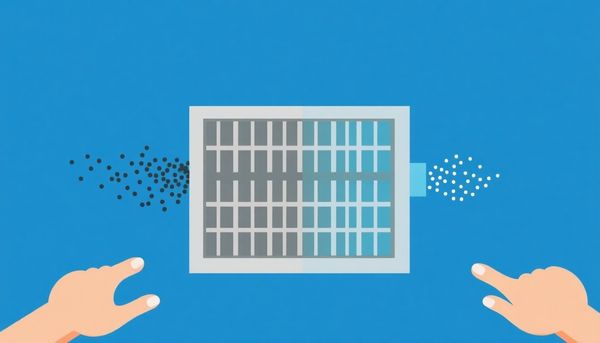
Occasionally, even the most dedicated pool owner faces the challenge of filtration issues. Imagine a warm summer day, ready to plunge into crystal-clear water, only to find your pool cloudy or the filter clogged. Baffling, isn’t it? But fear not, tackling these hiccups can be straightforward with a bit of know-how.
Start by checking the pressure gauge. An unusually high reading could indicate a blockage. For those using cartridge filters, ensure the cartridge is intact and free of tears. You might recall a time when you washed the cartridge but overlooked inspecting it for damage, only to find your pool still murky. Addressing such small oversights can save significant time and effort.
Sand filters, on the other hand, might just need a thorough backwash. If the sand seems clumpy or compacted, it might be time for a replacement. A friend once swapped out the sand in his filter after noticing a persistent rise in pressure, and the pool’s clarity improved almost instantly.
D.E. filters require a bit more finesse. Ensure that the grids or fingers are properly coated with D.E. powder. If not, disassemble the filter and clean each component meticulously. Once, I found that a simple misalignment of the grids was causing recurring issues. Realigning them solved the problem.
Regular maintenance and a keen eye for detail ensure that your pool filter runs smoothly, keeping your water pristine for those sun-soaked days.
Before you embark on cleaning your pool filter, understanding your specific filter type is crucial. Pool filters come in three primary forms: cartridge, sand, and diatomaceous earth (D.E.). Each type requires a unique cleaning approach, but identifying which one you have is your first step.
Cartridge filters are easy to spot. Typically, they are enclosed in a cylindrical housing and can be accessed easily for removal. If you’ve ever changed an air filter in your car, the process is quite similar. The cartridge itself is composed of pleated polyester material and is designed to trap debris as water passes through it.
Sand filters, on the other hand, resemble large round tanks, typically located next to your pool's pump. They are filled with sand and use a multiport valve at the top, which allows for backwashing—a process where water flows in reverse to flush out trapped dirt. If you notice a hefty tank with a bulky valve handle, chances are it’s a sand filter.
D.E. filters are slightly more complex. They utilize grids or fingers coated with a fine powder called diatomaceous earth. Often, they look similar to cartridge filters but can be distinguished by their need for D.E. powder after cleaning. They are adept at catching even the smallest particles, providing crystal-clear water.
Once you've pinpointed your filter type, you can proceed with the corresponding cleaning method. Whether it’s rinsing a cartridge, backwashing sand, or reapplying D.E., knowing your filter type ensures your efforts are both effective and efficient.
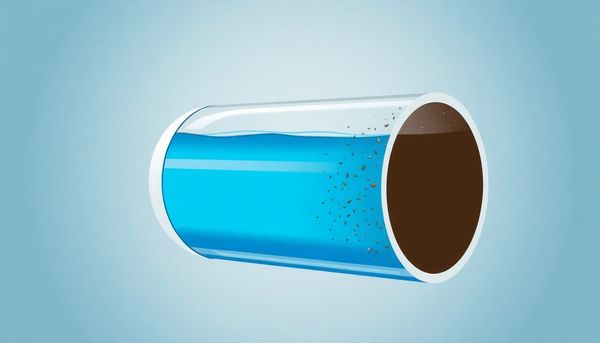
This article provided insights into maintaining your pool. Start your pool care journey today!
Want to become a pool maintenance expert? Our free Pool School course covers everything you need to know about pool care. From basic maintenance to advanced troubleshooting, you'll learn how to:
Join over 10,000 pool owners who have already transformed their pool care routine. Get started with our free Pool School course today!